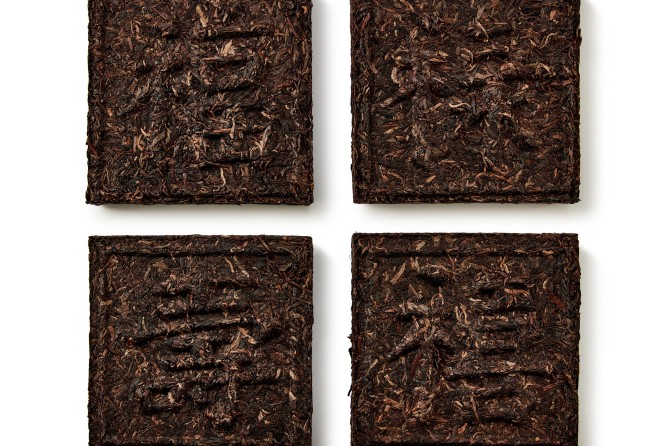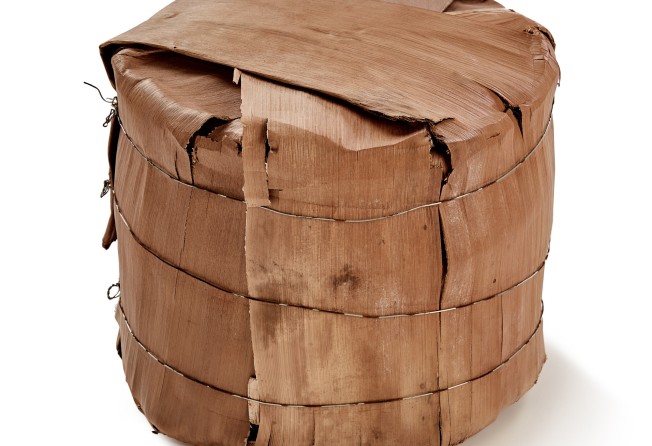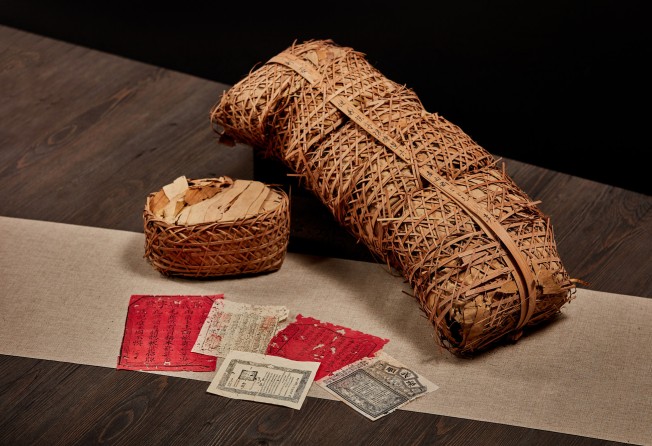
Why old Chinese tea can be worth more than wine or whisky: aged Puer leaves are the latest smart drinks investment – one 70-year-old cake just sold for more than US$70,000
- Following the success of Sotheby’s Hong Kong’s sale of an antique 1950 Blue Label tea cake for US$71,600, experts are tipping Chinese black tea as a smart investment
- Deteriorating growing environments, market speculation and a rekindled love for traditional tea in China is fuelling a Puer craze that rivals the traditional vintage wine market

Last December, Sotheby’s Hong Kong announced the launch of its inaugural Puer tea online auction with 20-plus lots, spanning from century-old antiques to modern day tipples. The highest bid of US$71,600 (HK$562,500) went to a 1950 Blue Label tea cake weighing around 330 grams – a lot celebrated not just for its antiquity, but because it is from a rare batch made during the municipalisation of tea production in China.
One of the oldest forms of tea, Puer is a variety of fermented black tea traditionally produced in the southern Yunnan province. The mellow yet elegant tipple is known for easing digestion, among its many health benefits, and became a popular drink during the Qing dynasty (1636–1912). For ease of transport across China and, eventually, to the West, the leaves were packed into cakes before they were sent on months-long journeys that serendipitously revealed the wonders brought by ageing.

In the past decade, the Chinese have rekindled their love for tea, and old cakes of Puer – now made increasingly valuable with deteriorating growing environments and market speculation – are the latest commodity to rise to luxury status.
Liam Gui, business manager of the important wine, whisky and Chinese tea department at Poly Auction – which hosted its first tea auction in Beijing back in 2010 – said the price of 1950s Puer tea cakes, for instance, have increased more than 10-fold within this period.
“Back when we started the tea auctions, the market wasn’t ready. We didn’t have a reliable source of antique teas nor were there enough specialists to examine them. But around five years ago, people started to develop a habit of drinking Puer again so we’re seeing collectors from Taiwan, Hong Kong and around the world,” he said, adding that after dipping into wines and coffee, the Chinese still prefer the communal and salubrious hobby of Puer appreciation.

Of the 20,000 tea species globally across seven categories, Puer stands out for its ubiquity and its methodical categorisation system throughout history. Split into three major eras, Puer is labelled as centennial ancient tea, municipalised tea (grown during the establishment of the People’s Republic), or tea made post-1970s when production was privatised again. Aside from historical rarity, tea cakes also demand meticulous storage as they can be a sponge for smells and should be kept in darkness and in perfect humidity.
Henry Yeung, managing director of revered tea retailer Sun Sing Tea, said proper storage trumps its origins when it comes to good aged tea: “If tea isn’t stored properly, it’s worth nothing.”
Puer’s authentication, too, poses a challenge for appraisers. Though there are variations between tea makers, tea cakes are usually packaged with coded tickets that depict information like formula, leaf type and grade as a claim of authenticity. But to keep the package intact for optimal value, appraisers can only rely on smell and the wrapper.

“If the tea cake is made in the 1970s to 1980s, the packaging will have thicker paper; 1990s, it’s a thinner paper,” said Yeung. “We also look at the colour of the ink on the labels, the use of catty or kilograms, and other clues – like how in 1996, Menghai Tea Factory changed its name.
“If we smell it, we are 70 per cent sure – if we taste it, we can be completely certain of not the year, but the era it was made.”
“Compared to wine, there’s much less Puer on the market since there have been no professionals, funds or organisations in place that gather the tea for appreciation or ageing purposes. People have been drinking it over time and sources are depleted,” he said, adding that he is ecstatic to see Puer follow the footsteps of whisky and Mao-tai onto the global stage.
“I mean, how many 100-plus year-old whiskies can you find in comparison?”
When it comes to dabbling in the Puer market, however, Yeung encourages buyers to start with 10-to-15 year-old tea cakes for ageing and self-appreciation later on rather than betting on reselling an expensive lot, especially given that storage is such a pedantic endeavour.

Poly Auction’s Gui agreed, adding that since there’s yet to be a Robert Parker or a GIA-parallel for aged teas, new buyers should start with their flavour preferences and – for investment purposes – speculation in the Chinese market.
“Diamonds will remain the same anywhere around the world but the quality of tea depends on the climate it was made, stored and brewed in, the person brewing it, their understanding of tea, the water they use: it’s very multifaceted,” he said.
“Like wine, the auction market is trying to differentiate the palettes for tea. If you want something elegant, you want a burgundy, a Bordeaux for something robust. After all, tea is made for appreciation, it’s a part of daily life,” he said. “For investors, however, look to the China market in the next decade. If it does well, so would Chinese products like Mao-tai and teas.”